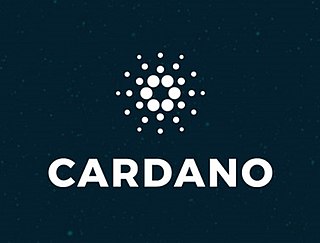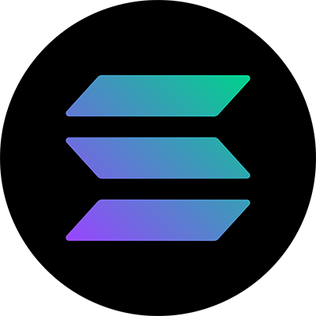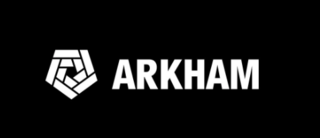
Ethereum is a decentralized blockchain with smart contract functionality. Ether is the native cryptocurrency of the platform. Among cryptocurrencies, ether is second only to bitcoin in market capitalization. It is open-source software.
A decentralized autonomous organization (DAO), sometimes called a decentralized autonomous corporation (DAC), is an organization managed in whole or in part by decentralized computer program, with voting and finances handled through a blockchain. In general terms, DAOs are member-owned communities without centralized leadership. The precise legal status of this type of business organization is unclear.
A blockchain is a distributed ledger with growing lists of records (blocks) that are securely linked together via cryptographic hashes. Each block contains a cryptographic hash of the previous block, a timestamp, and transaction data. Since each block contains information about the previous block, they effectively form a chain, with each additional block linking to the ones before it. Consequently, blockchain transactions are irreversible in that, once they are recorded, the data in any given block cannot be altered retroactively without altering all subsequent blocks.
Hyperledger is an umbrella project of open source blockchains and related tools that the Linux Foundation started in December 2015. IBM, Intel, and SAP Ariba have contributed to support the collaborative development of blockchain-based distributed ledgers. It was renamed the Hyperledger Foundation in October 2021.
A decentralised application is an application that can operate autonomously, typically through the use of smart contracts, that run on a decentralized computing, blockchain or other distributed ledger system. Like traditional applications, DApps provide some function or utility to its users. However, unlike traditional applications, DApps operate without human intervention and are not owned by any one entity, rather DApps distribute tokens that represent ownership. These tokens are distributed according to a programmed algorithm to the users of the system, diluting ownership and control of the DApp. Without any one entity controlling the system, the application is therefore decentralised.

Cardano is a public blockchain platform. It is open-source and decentralized, with consensus achieved using proof of stake. It can facilitate peer-to-peer transactions with its internal cryptocurrency, ADA.

A non-fungible token (NFT) is a unique digital identifier that is recorded on a blockchain and is used to certify ownership and authenticity. It cannot be copied, substituted, or subdivided. The ownership of an NFT is recorded in the blockchain and can be transferred by the owner, allowing NFTs to be sold and traded. Initially pitched as a new class of investment asset, by September 2023, one report claimed that over 95% of NFT collections had zero monetary value.

The Open Network is a decentralized computer network consisting of a layer-1 blockchain with various components. TON was originally developed by Nikolai Durov and the messaging platform, Telegram and now embraced by a global community of independent contributors.

TRON is a decentralized, blockchain-based operating system with smart contract functionality, proof-of-stake principles as its consensus algorithm and a cryptocurrency native to the system, known as Tronix (TRX). It was established in March 2014 by Justin Sun and since 2017 has been overseen and supervised by the TRON Foundation, a non-profit organization in Singapore, established in the same year. It is open-source software.

Avalanche is a decentralized, open-source proof of stake blockchain with smart contract functionality. AVAX is the native cryptocurrency of the platform.
Decentralized finance offers financial instruments without relying on intermediaries such as brokerages, exchanges, or banks by using smart contracts on a blockchain, mainly Ethereum. DeFi platforms allow people to lend or borrow funds from others, speculate on price movements on assets using derivatives, trade cryptocurrencies, insure against risks, and earn interest in savings-like accounts. DeFi uses a layered architecture and highly composable building blocks. Some applications promote high-interest rates but are subject to high risk. Coding errors and hacks have been common in DeFi.

Uniswap is a decentralized cryptocurrency exchange that uses a set of smart contracts to create liquidity pools for the execution of trades. It is an open source project and falls into the category of a DeFi product because it uses smart contracts to facilitate trades instead of a centralized exchange. The protocol facilitates automated transactions between cryptocurrency tokens on the Ethereum blockchain through the use of smart contracts. As of October 2020, Uniswap was estimated to be the largest decentralized exchange and the fourth-largest cryptocurrency exchange overall by daily trading volume.

CryptoPunks is a non-fungible token (NFT) collection on the Ethereum blockchain. The project was launched in June 2017 by the Larva Labs studio, a two-person team consisting of Canadian software developers Matt Hall and John Watkinson. The experimental project was inspired by the London punk scenes, the cyberpunk movement, and electronic music artists Daft Punk. The crypto art blockchain project was an inspiration for the ERC-721 standard for NFTs and the modern crypto art movement, which has since become a part of the cryptocurrency and decentralized finance ecosystems on multiple blockchains.

0x is an open-source, decentralized exchange infrastructure that enables the exchange of tokenized assets on multiple blockchains. Developers can use 0x to incorporate exchange functionality into their applications, and market makers can use 0x to create markets for cryptocurrencies and tokens. ZRX, an Ethereum ERC-20 token, is the native governance and staking token of 0x. Individuals who own ZRX can vote on protocol changes and stake their tokens to earn liquidity rewards in Ether (ETH). The project's creator and core developer is 0x Labs.

Solana is a blockchain platform which uses a proof-of-stake mechanism to provide smart contract functionality. Its native cryptocurrency is SOL.
Web3 is an idea for a new iteration of the World Wide Web which incorporates concepts such as decentralization, blockchain technologies, and token-based economics. Some technologists and journalists have contrasted it with Web 2.0, wherein they say data and content are centralized in a small group of companies sometimes referred to as "Big Tech". The term "Web3" was coined in 2014 by Ethereum co-founder Gavin Wood, and the idea gained interest in 2021 from cryptocurrency enthusiasts, large technology companies, and venture capital firms. The concepts of Web3 were first represented in 2013.
StarkWare Industries is an Israeli software company that specializes in cryptography. It develops zero-knowledge proof technology that compresses information to address the scalability problem of the blockchain, and works on the Ethereum platform. In May 2022, the company's estimated value was $8 billion, an increase from $2 billion six months earlier.

The ERC-721 Non-fungible Token Standard, is a technical framework, defining a set of rules and interfaces for creating and managing unique, non-fungible tokens (NFTs) on the Ethereum blockchain. ERC-721 is recognized for formalizing the concept of an NFT and establishing the foundation of the multi-billion dollar digital collectibles ecosystem that emerged alongside its adoption. It is one of the most widely used NFT standards across use cases and has been utilized in various high profile projects.
The Aave Protocol is an open-source, decentralized finance (DeFi) protocol built on the Ethereum blockchain and released in 2020. It is one of the largest cryptocurrency liquidity protocols. The Aave Protocol uses smart contracts to automate processes, including distributing funds and handling collateral.

Arkham Intelligence is a public data application that enables users to analyze blockchain and cryptocurrency activity. Founded by Miguel Morel in 2020, the company's platform utilizes AI to identify and catalog the owners of blockchain addresses.












